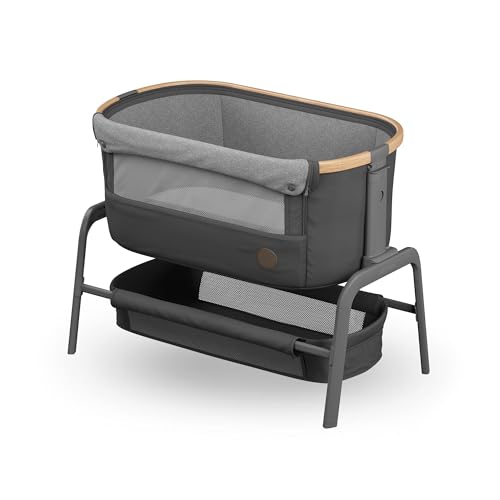10 Meetups Around Bedside Cot For Infants You Should Attend

The Importance of Bedside Cots for Infants: A Comprehensive Guide
As new parents start their parenting journey, they are confronted with a myriad of options worrying their infant's sleep arrangements. Amongst these choices, the bedside cot sticks out for its myriad of advantages. This article checks out the significance of bedside cots, discusses their advantages and disadvantages, answers frequently asked concerns, and includes a comparative table to help parents make notified decisions.
What Is a Bedside Cot?
A bedside cot is a sleep space designed to be put next to the parents' bed, permitting easy access to the infant during the night. These cots feature adjustable height settings, allowing them to align with the height of the adult bed. Frequently, they can be connected securely to the bed or stay close by, offering a safe yet available sleep environment for the baby.
Types of Bedside Cots
- Co-Sleeping Cots: These cots attach securely to the parents' bed, permitting for close proximity while guaranteeing the baby has their own safe sleeping space.
- Freestanding Cots: These are positioned beside the bed however do not connect straight. They still use a convenient reach for feeding and comforting.
- Portable Cots: These cots are lightweight and created for travel, often including foldable styles and easy-transport abilities.
Benefits of Using a Bedside Cot
Bedside cots supply several benefits that can boost both the infant's sleep experience and the parents' assurance. These include:
1. Enhanced Safety
According to the American Academy of Pediatrics (AAP), having the infant sleep in the same room as parents, without sharing the same sleeping surface area, significantly lowers the risk of Sudden Infant Death Syndrome (SIDS). A bedside cot provides a safe space while maintaining proximity.
2. Easier Nighttime Care
When a baby is within arm's reach, feeding, diaper modifications, and reassuring becomes much more convenient. Parents can quickly relieve their infant without fully waking from sleep or leaving the bed.
3. Support of Bonding
The close proximity supplied by a bedside cot motivates bonding during nighttime feedings or reassuring. This can promote a sense of security for the infant and assistance develop more powerful emotional connections.
4. Space-saving Design
Many bedside cots are created to be compact, making them perfect for small living spaces where a full-sized crib might not fit. They can be quickly moved or stored when not in use.
5. Versatile Functionality
Most bedside cots can be adjusted in height and typically include removable sides, making them versatile for various usages as the kid grows or family needs change.
Downsides of Bedside Cots
In spite of their advantages, there are some disadvantages to think about when picking a bedside cot:
1. Limited Lifespan
Bedside cots usually have a much shorter life-span than standard cribs, typically accommodating infants only as much as a specific weight or height. Parents might need to shift to a complete crib earlier than expected.
2. Stability Concerns
If not securely connected or properly placed, a bedside cot may posture safety concerns. Parents need to guarantee that the cot is stable and well-aligned with the bed.
3. Adjustment Period
Some infants might require time to get utilized to sleeping in a cot, specifically if they are used to closer contact. Parents might require to be client as their kid adapts.
How to Choose the Right Bedside Cot
When picking a bedside cot, parents should think about the following criteria:
- Safety Standards: Ensure the cot abides by all security regulations.
- Adjustability: Look for height-adjustable functions that line up with your bed.
- Building Material: Choose a cot that is sturdy and made of non-toxic products.
- Alleviate of Use: Opt for styles that enable for one-handed operation when accessing the infant.
Table: Comparison of Popular Bedside Cots
| Feature | Co-Sleeping Cot | Freestanding Cot | Portable Cot |
|---|---|---|---|
| Attachment to Bed | Yes | No | No |
| Adjustability | Yes | Yes | Yes |
| Travel-Friendly | No | No | Yes |
| Lifespan | 6-12 months | 18-24 months | 0-12 months |
| Price Range | ₤ 150-₤ 300 | ₤ 100-₤ 250 | ₤ 50-₤ 150 |
Regularly Asked Questions (FAQs)
1. Are bedside cots safe for my baby?
Yes, when utilized correctly and according to safety standards, bedside cots are safe for infants. It is essential to make sure that the cot is safely positioned and does not present any danger of falling.
2. At what age can I shift my baby from a bedside cot to a crib?
The majority of parents transition their baby from a bedside cot to a crib between 6 months and 2 years, depending upon the infant's growth and convenience level.
3. Can I use a bedside cot for twins?
While some bedside cots are developed to accommodate more than one kid, the majority of are intended for single infants. click the following web page of twins might require to think about using separate cots.
4. How do I maintain my bedside cot?
Routine cleansing, examining for wear and tear, and guaranteeing that all elements, such as security straps and bed mattress, are in excellent condition, can help maintain your bedside cot.
Choosing the ideal sleep arrangement for an infant is among the many choices that new parents deal with. A bedside cot provides unrivaled benefit and safety while enabling close parental interaction. Understanding the advantages, drawbacks, and functions of bedside cots can empower parents to make the ideal choice for their household's needs. By weighing these factors together with security preventative measures, parents can develop a nurturing sleep environment for their little ones.

